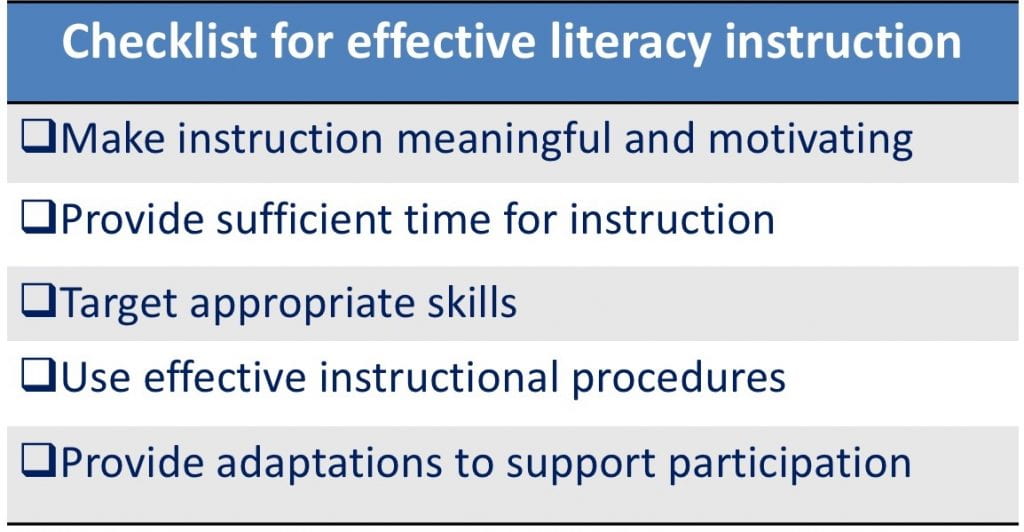Many of the available literacy programs require learners to provide spoken responses so children like Anna are not able to participate. We needed to develop a more effective approach to literacy instruction for Anna and for other children with complex communication needs. The instruction was based on the evidence-based practices from the National Reading Panel but we adapted them to accommodate the needs and skills of children with complex communication needs. We evaluated the effectiveness of the instruction in a research study with children with a wide range of special needs. For further information, visit our website on literacy instruction at AACliteracy.psu.edu.
We made sure that instruction with Anna followed these key principles:

This checklist provides a summary of each of the key, evidence-based principles of literacy instruction for individuals with complex communication needs. We will add more details as we discuss each of these principles. You can follow along with this checklist as we describe Anna’s literacy instruction. You can then use this checklist when you plan literacy instruction for students with complex communication needs to check that you have included all of the key components.
Although this website focuses specifically on literacy instruction with Anna, a young girl with ASD, the principles are also relevant for individuals with other disabilities such as Down syndrome or cerebral palsy, or for individuals that are older than Anna. Just remember to make adaptations to fit each student’s age, needs, skills, and especially their interests!